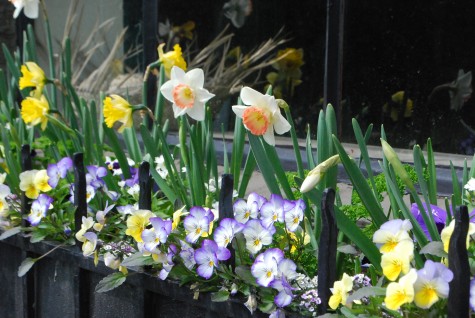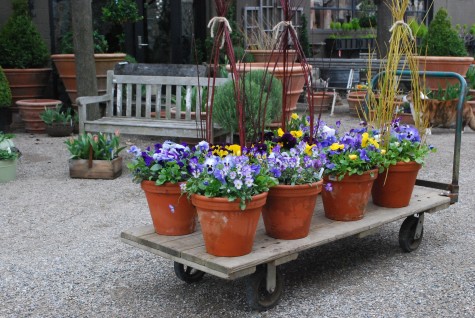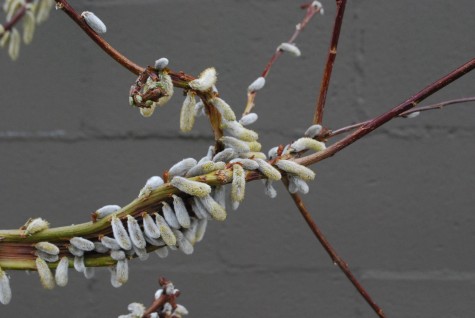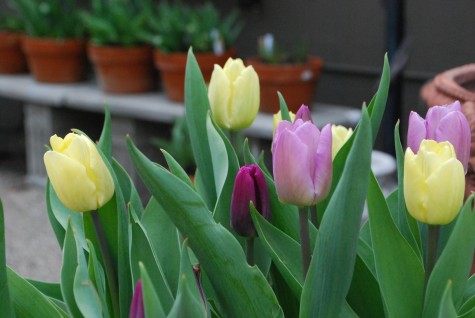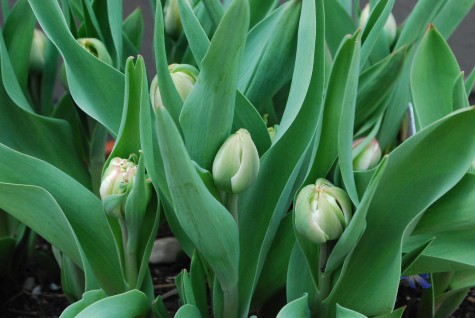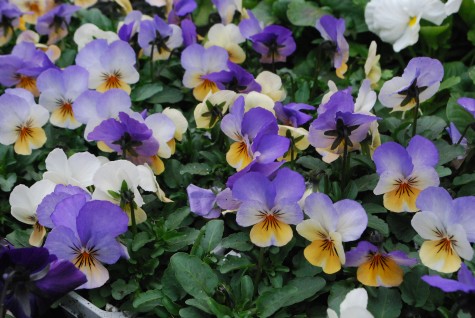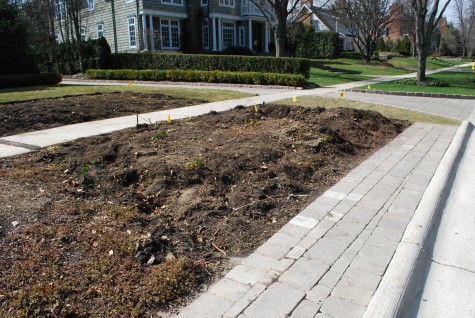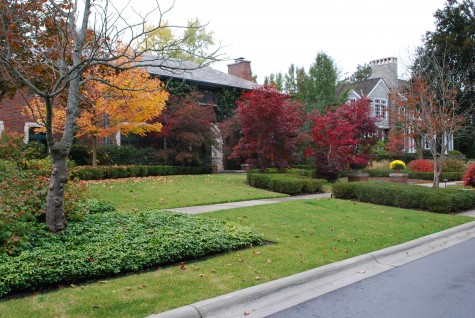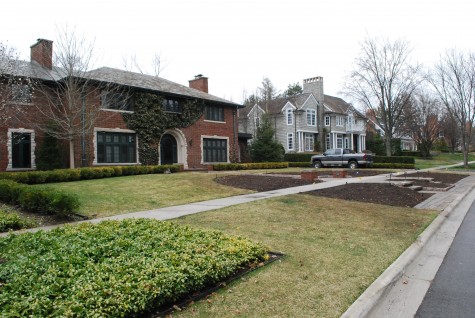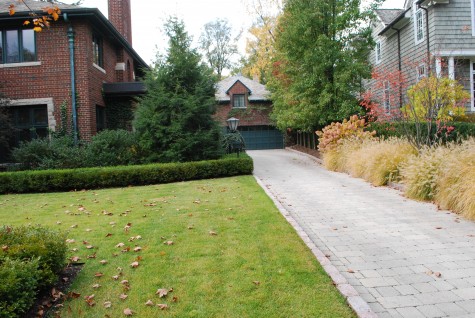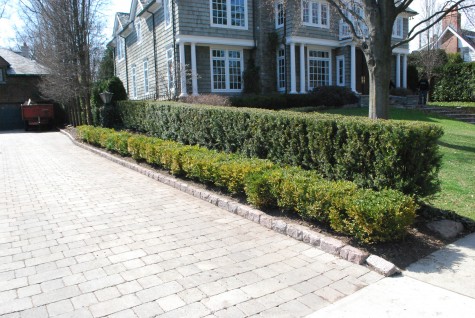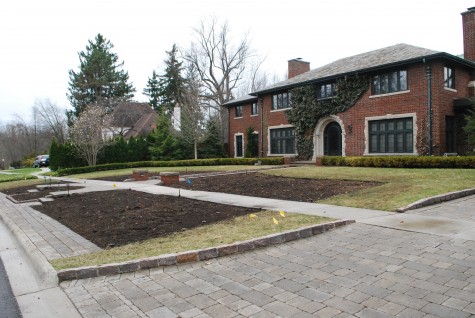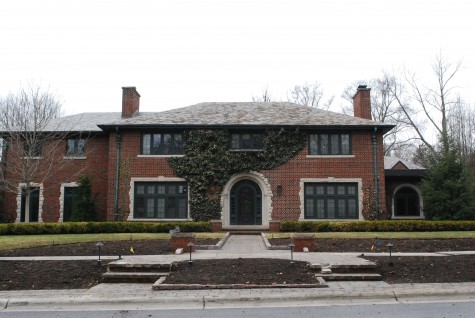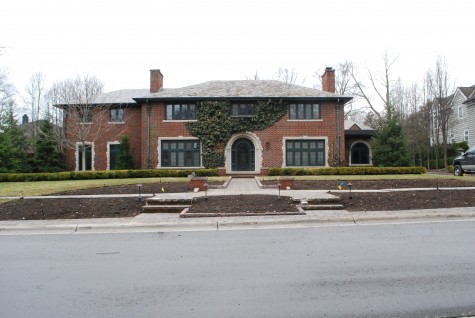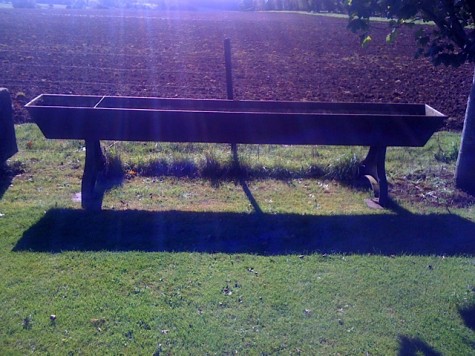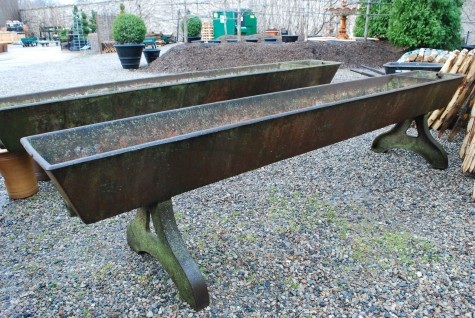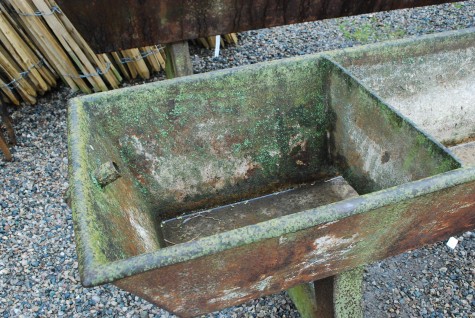 For good or for ill, most of us inherit a driveway that comes with the home we buy. They are a necessity of life-most of us drive any number of places in a given day. There is a need for space for multiple cars, a place for company to park. Plenty of driveways are designed by exuberant contractors that love their hard surfaces better than they love anything else. This accounts for diveways like the one pictured above. It looks big enough to host a pair of UPS trucks side by side, and it is. 19 feet wide, that is.
For good or for ill, most of us inherit a driveway that comes with the home we buy. They are a necessity of life-most of us drive any number of places in a given day. There is a need for space for multiple cars, a place for company to park. Plenty of driveways are designed by exuberant contractors that love their hard surfaces better than they love anything else. This accounts for diveways like the one pictured above. It looks big enough to host a pair of UPS trucks side by side, and it is. 19 feet wide, that is.
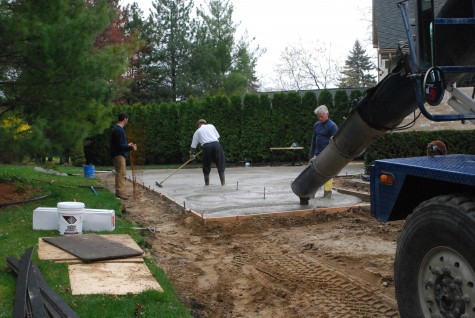 Sometimes you get lucky; this driveway was 28 years old, and deteriorated. It needed to be replaced, which meant it could be redesigned. A new material might be considered. A giant concrete landing pad in front of the garage doors had doubled as a basketball court for quite a few years. The kids are grown now; a client’s use of their landscape can change over the years.
Sometimes you get lucky; this driveway was 28 years old, and deteriorated. It needed to be replaced, which meant it could be redesigned. A new material might be considered. A giant concrete landing pad in front of the garage doors had doubled as a basketball court for quite a few years. The kids are grown now; a client’s use of their landscape can change over the years.
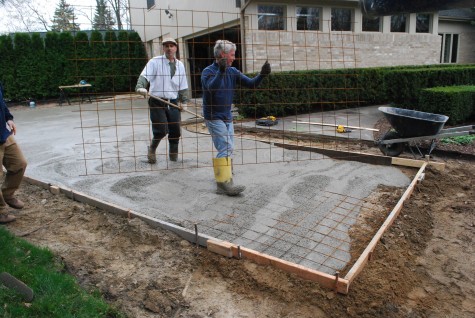 My first idea was to make it smaller. I pull my chevy Suburban in and out of my driveway every day; at one point the drive is but 8 feet wide. This drive will have a finished width of 13 feet. Less is more, and less is nice-unless you have different than average requirements. Some streets do not allow parking on the street. Some families are big families. Some people entertain a lot, or have 4 drivers going in and out at different times. Should you have a very wide driveway by default, or need a wide drive, there are ways to minimize the impact on the eye. The use of several materials, and the color of the surface can make a world of difference.
My first idea was to make it smaller. I pull my chevy Suburban in and out of my driveway every day; at one point the drive is but 8 feet wide. This drive will have a finished width of 13 feet. Less is more, and less is nice-unless you have different than average requirements. Some streets do not allow parking on the street. Some families are big families. Some people entertain a lot, or have 4 drivers going in and out at different times. Should you have a very wide driveway by default, or need a wide drive, there are ways to minimize the impact on the eye. The use of several materials, and the color of the surface can make a world of difference.
 As this house has a contemporary feeling about the architecture, the drive is being poured in concrete that will have an exposed aggregate surface. A grid of steel rebar will be laid in-this gives the concrete considerably greater strength. Portland cement, water, and an aggregate are mixed together prior to the pour. I am sure you have all seen a concrete truck, the barrel of which turns constantly. Concrete will begin to set up very quickly; the motion keeps the aggregate evenly dispersed in the cement cream until it is poured.
As this house has a contemporary feeling about the architecture, the drive is being poured in concrete that will have an exposed aggregate surface. A grid of steel rebar will be laid in-this gives the concrete considerably greater strength. Portland cement, water, and an aggregate are mixed together prior to the pour. I am sure you have all seen a concrete truck, the barrel of which turns constantly. Concrete will begin to set up very quickly; the motion keeps the aggregate evenly dispersed in the cement cream until it is poured.
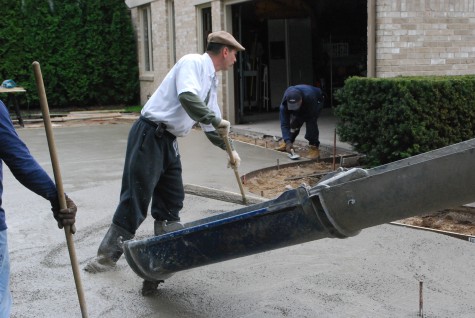 The mixture is released from the chute as the contractor requires. This is a lot of batter to look after. The forms that hold the concrete have been set up to insure that the finished surface pitches away from the house. The driveway being replaced had little pitch; my client would have ice in her garage on occasion as a result. Much the scale of a grading rake is a concrete screed; it helps the contractor to smooth the mixture to the level set by the forms.
The mixture is released from the chute as the contractor requires. This is a lot of batter to look after. The forms that hold the concrete have been set up to insure that the finished surface pitches away from the house. The driveway being replaced had little pitch; my client would have ice in her garage on occasion as a result. Much the scale of a grading rake is a concrete screed; it helps the contractor to smooth the mixture to the level set by the forms.
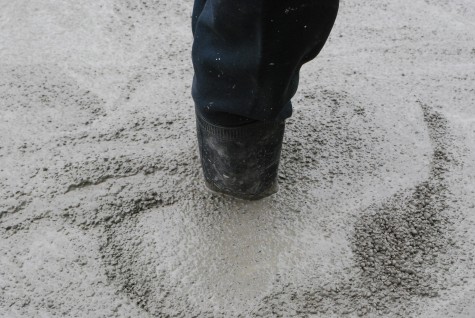 He tells me this mixture is a little soupier than he likes, but the finished product will be fine. Once the mixture is poured, it will be covered with plastic, and allowed to rest until the lower level firms up. Though the curing process is a chemical reaction, the cool and rainy weather will slow the initial hardening process. At precisely the proper moment, the concrete cream which has risen to the surface will be washed away, leaving 1/3 of the stone exposed, and 2/3 of the stone securely embedded in the concrete. Beautifully executed exposed concrete aggregate is an absolutely beautiful surface. It is a difficult surface to do well. This driveway is being done by Albaugh Stone and Masonry; they are well known for the quality of their work.
He tells me this mixture is a little soupier than he likes, but the finished product will be fine. Once the mixture is poured, it will be covered with plastic, and allowed to rest until the lower level firms up. Though the curing process is a chemical reaction, the cool and rainy weather will slow the initial hardening process. At precisely the proper moment, the concrete cream which has risen to the surface will be washed away, leaving 1/3 of the stone exposed, and 2/3 of the stone securely embedded in the concrete. Beautifully executed exposed concrete aggregate is an absolutely beautiful surface. It is a difficult surface to do well. This driveway is being done by Albaugh Stone and Masonry; they are well known for the quality of their work.
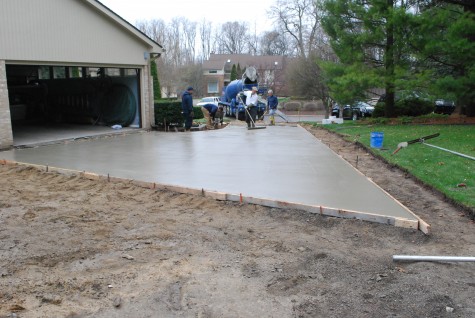 You can see from this picture that the basketball court where I am standing at the end of the old drive is no more. Once the drive is done, a decision will be made about how to l;andscape the space. This photograph says everything about what my client sees when she comes home every day. The driveway landscape is a very important one-most people visit it every day.
You can see from this picture that the basketball court where I am standing at the end of the old drive is no more. Once the drive is done, a decision will be made about how to l;andscape the space. This photograph says everything about what my client sees when she comes home every day. The driveway landscape is a very important one-most people visit it every day.
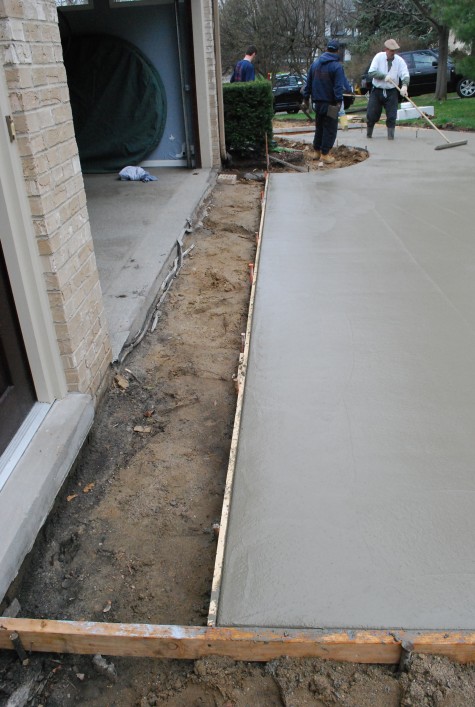 How the transition between the garage and drive gets handled is important to the functionality of the drive. Water has to drain away. The narrow transitional strip of garage upon which the garage door sits will be removed. The sand strip you see here, and the garage strip will be repoured as a single piece; this piece will drop 3/4 of an inch from the floor of the garage.
How the transition between the garage and drive gets handled is important to the functionality of the drive. Water has to drain away. The narrow transitional strip of garage upon which the garage door sits will be removed. The sand strip you see here, and the garage strip will be repoured as a single piece; this piece will drop 3/4 of an inch from the floor of the garage.
Exposed concrete aggregate is a very sturdy and strong driveway surface which survives our harsh winters quite well. The textured surface from the exposed stone is visually lively, but very clean and uniform. The crisp surface will compliment the architecture well.
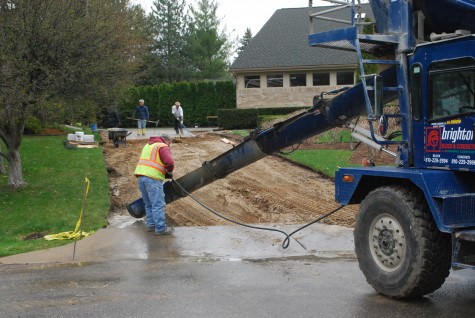
Once the concrete is poured, washed and sawcut, I will write again about the design of the surface. Any beautiful material asks for a thoughtful design.

